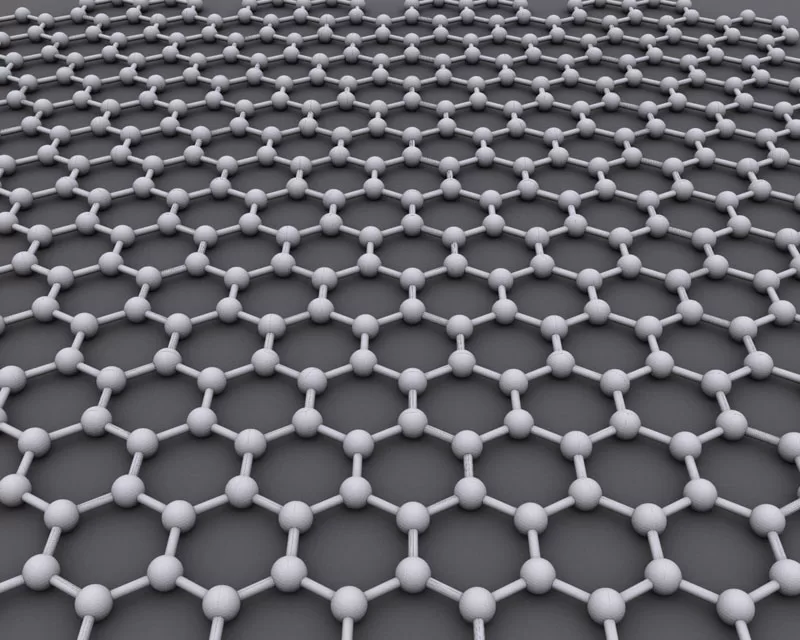Graphene: The Revolutionary New Age Building Material for Prefab Construction
Graphene is 1 atom thick and carbon atoms in it are bonded together in a hexagonal lattice, and this arrangement is what makes graphene so special.
It’s been called the “Wonder Material of the 21st Century” and one of the biggest scientific developments of the decades. Its possibilities are endless, from being able to conceptualise space elevators to building super tall structures. Artists have always imagined and visualised extremely ambitious and futuristic projects, so what’s going to get us there? Perhaps Graphene and Graphenated composites is one such material. Graphene is 1 atom thick and carbon atoms in it are bonded together in a hexagonal lattice, and this arrangement is what makes graphene so special.
Why does this word sound so familiar? Because it’s derived from graphite, a material we have been using since kids in the everyday wooden pencil. Graphene is the single layer of graphite and is two-dimensional in nature, so to put it in easy words, it’s 200 times stronger than steel, lighter than paper, and above all, the most efficient conductive material of electricity and heat ever discovered. All of this excitement surely should have made it extremely popular, but why haven’t we heard of it that much? Why has it not taken over the world yet? The problem lies with graphene not being able to reach mass production rates, which stopped it from creating actual products.
Since its discovery in 2004 by peeling off a layer of graphite at the “University of Manchester,” it has been waiting patiently for its time to take over the world, and I believe that with global warming’s effects being witnessed around the globe, it’s just about time for the industry that contributes so much to the emission of greenhouse gases to look at a material that can reduce carbon emissions and that has its applications in construction’s various aspects. This Nobel Prize-winning material is currently seeing a big shift, and scientists at the GEIC at the University of Manchester are currently focusing on increasing the strength of concrete by adding graphene to it.
Results show that it has a very high early strength and tensile strength in the first few days, which leads to less water usage and less corrosion in iron. This testing led to the first commercial usage of graphene-applied concrete by a company called “Concrete.” Results showed a 30% increase in strength, which further led to the idea of 3D printing graphene-infused concrete in one of the biggest infrastructure projects, “HS2”. It was used in parts of retaining walls, and the unique feature of this 3D printed material completely replaced the steel rebar. Hearing this can seem nothing short of a fantasy story, but it is real, and we need to ensure that we stay on track with science and technology and integrate these into our way of practise as this gives us the opportunity to capture a market that is still untapped.
Let’s get into a little more detail about graphene being used currently in the world. The next construction and architecture-related project where graphene was used was in the transportation industry. At Rome’s Fiumicino Airport, a new type of graphene-infused road has been constructed and trialed; it was observed to be twice as long-lasting as regular asphalt. It was developed by a company called ITERCHEMICA. The product known as “GIPAVE” combined the materials to be used on the road.
Now, something that also stops graphene from being commercially available to the world is the various industry regulations that get in the way of mass production as its potential is still being understood. Graphene- based materials can be changed and upgraded through various strategies, like adjusting their construction, initiating them, or adding new functionalities. A typical way of changing these materials is by adding particles either covalently or non-covalently, presenting dopants, or consolidating them with different materials. Non-covalent interactions frequently use collaborations like van der Waals powers, ionic cooperation, or hydrogen holding. As indicated by market investigations, the graphene market is supposed to reach $700 million by 2031. In this manner, it’s vital to foster reasonable and effective techniques to create graphene-based materials in enormous amounts for economical use in the development business.

One promising methodology is using modern and rural waste as a hotspot for making graphene-based materials, which can address natural worries while supporting modern applications. As mentioned above, changing different materials’ chemical properties by infusing them with graphene in the construction industry can be extremely advantageous. Let’s take the instance of the earthquake in Turkey that occurred earlier this year and pretty much shattered entire towns. If we are to use graphene to a structure’s advantage and protect buildings in earthquake-prone zones, we can prevent such calamities from causing human suffering to such a massive extent.
Let’s take a more streamlined approach to the industry from the field I currently work in – interior design services. What can its applications be in the field of interiors? What can graphene give the world in terms of pure design? If we ever see futuristic movies or try to visualise humans as a Type 1 civilization based on Kardashev’s scale of estimating how advanced we are as a civilization, there is always a total integration of technology in the spaces where we reside, which includes the integration of screens in the walls.
Apart from that, there is the integration of medical science into architectural spaces, such as sensors in washrooms that can detect the onset of cancer way before it can be formed. This might seem farfetched, but it is very much possible for a graphene-integrated wall to let electricity pass seamlessly and help the sensors check vital human signs daily. Graphene can help light pop up from walls in places of our choice at random. It can give us integrated screens that work in par with our future AI. Hence, here we are able to achieve the futuristic way of design that we see in famous sci-fi movies and TV series.
New interior design materials that are super flexible and super conductive can be developed. For example, we are already in the stage of deploying carbon nanotubes that are integrated with graphene. Carbon nanotubes were first introduced by Japanese physicist Sumio Ijima, and this is a whole different subject that can be written about, but let us focus on their integration with graphene, which serves as an alternative to replace steel and also completely eliminates the need to release so many greenhouse gases to produce this metal in the first place. Graphene aerogel is another material that has been developed and is known as the lightest insulation material ever. It is so advanced that it can easily be used in space, shielding astronauts and entire spaceships from the extremely harsh environment. Its application varies from outer space to simple acoustic panels in interior design.
All of this might seem outrageous to someone who has never heard of graphene, but I believe we already are in the age of AI, and it’s just around the corner when we see massive shifts in the way we live our lives on planet earth. Time might only seem to pass on faster, and with our productivity set to reach an all-time high, I believe my interest in exploring the material could get you, as a reader, excited for the decades that are yet to come. We have always been restricted by gravity to help us reach the skies, and perhaps with this wonder material in our hands, I see a future where super tall buildings are built in a timeline that would make the Romans astonished. The entire set of prefabricated pieces of buildings can just be assembled as a puzzle, similar to the makeshift hospitals seen in China at the outbreak of COVID, and to the comfort of the team installing it, it’s only going to be the easiest installation of the prefab structure due to it being extremely lightweight.
So, I hope to see the deployment of this wonder material in the coming decades, and something that I would like to remind all of us is that we always need to be ready to accept new technology. The fear of being replaced by something better has always been there, right from the day the humble calculator was introduced, or for that matter, the mighty computer. All of this has only let humans scale heights that could never have been imagined by generations before us. Let’s bravely go ahead and build the space elevators and may this material help designers and engineers build structures and designs that were restricted due to the non-availability of new-age materials. The biggest beneficiary of this will always be Mother Nature and helping her breathe freely again. Keeping that agenda in mind and accepting new-age technology is a vision that we must be ready to integrate into our daily lives.
Source: colliers.com





